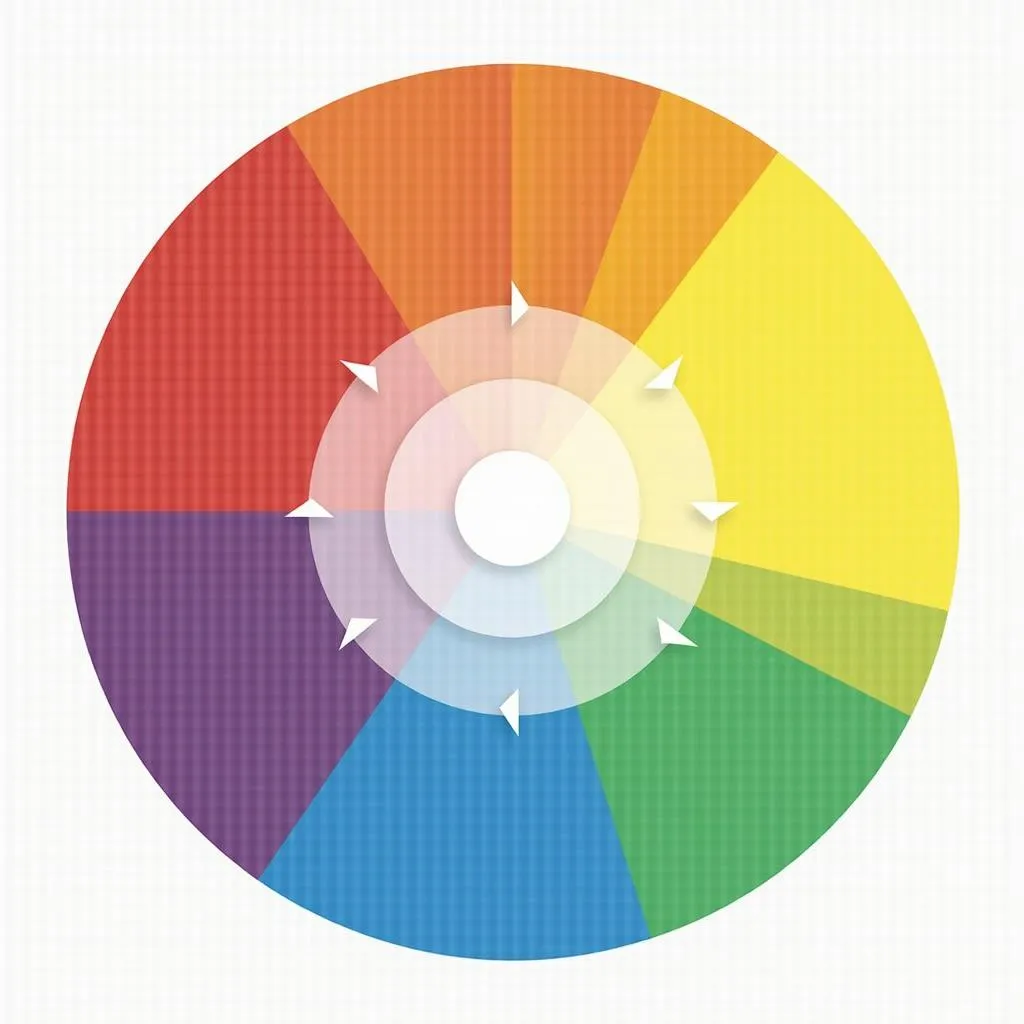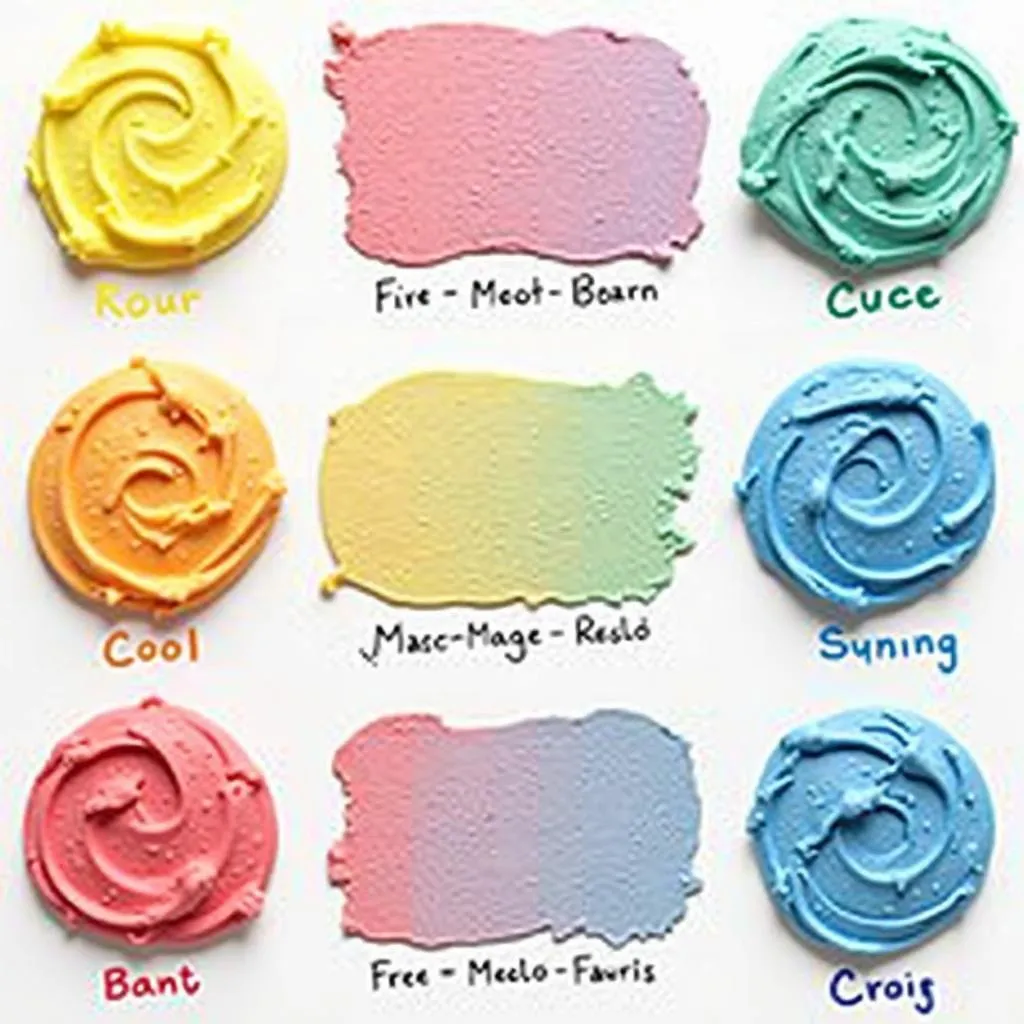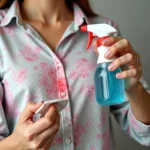Have you ever wanted to create a specific shade for your frosting but only had a limited set of food coloring on hand? Don’t worry, mastering the art of mixing food coloring to make different colors is easier than you think! With a few basic primary colors and a dash of creativity, you can unlock a rainbow of possibilities for your culinary creations.
Understanding the Color Wheel
Just like in art class, the key to mixing food coloring lies in understanding the color wheel. The primary colors, red, blue, and yellow, serve as the foundation for creating a wide spectrum of hues.
- Red + Blue = Purple: Combining these primary colors in varying ratios will produce shades ranging from vibrant violet to deep indigo.
- Blue + Yellow = Green: Want to achieve a natural green for your frosting? Mixing blue and yellow will allow you to create shades from lush forest green to bright lime.
- Red + Yellow = Orange: From sunny yellow-orange to fiery reddish-orange, the possibilities are endless when you blend these two primary colors.
 Mixing Primary Colors
Mixing Primary Colors
Mixing Tips for Vibrant Hues
Here are a few essential tips to keep in mind when mixing food coloring:
-
Start Small: Always begin by adding a small amount of each color and gradually increase until you achieve the desired shade. Remember, it’s easier to darken a color than to lighten it.
-
Use a Clean Palette: To ensure accurate color mixing, use a white plate or bowl as your palette. This will help you clearly see the colors you are blending.
-
Gel vs. Liquid Food Coloring: While both types of food coloring work well, gel food coloring tends to be more concentrated, resulting in more vibrant colors. If you’re using liquid food coloring, you may need to use slightly more to achieve the same intensity.
 Food Coloring Mixing Guide
Food Coloring Mixing Guide
Beyond the Basics: Creating Tertiary Colors and More
Once you feel confident with mixing primary colors, you can experiment with creating tertiary colors by combining a primary color with a neighboring secondary color on the color wheel. For example, mixing blue (primary) with green (secondary) will result in a beautiful teal or turquoise.
Don’t be afraid to think outside the box and experiment with different ratios and combinations. You can even create more complex shades by incorporating black or white food coloring to adjust the saturation and brightness.
“Remember, practice makes perfect,” says renowned pastry chef, Emily Carter. “Don’t be discouraged if your first attempts don’t turn out exactly as planned. The more you experiment with mixing food coloring, the better you’ll become at understanding the nuances of color and creating your own unique shades.”
Troubleshooting Common Color Mixing Challenges
Even with the best techniques, you might encounter some common challenges when mixing food coloring. Here are a few tips to help you troubleshoot:
-
Color Too Dark? If you’ve accidentally added too much coloring, you can try diluting the mixture with a small amount of white food coloring or the base ingredient you’re coloring.
-
Color Not Vibrant Enough? If your color appears dull, try adding more food coloring gradually until you achieve the desired intensity.
-
Can’t Achieve the Exact Shade? Remember that slight variations in food coloring brands and types can affect the final color. If you’re working on a project where precise color matching is crucial, consider using a color chart or recipe that specifies the exact brand and type of food coloring used.
 Frosting Color Swatches
Frosting Color Swatches
Conclusion
Mixing food coloring to create custom colors is a fun and rewarding way to add a personalized touch to your culinary masterpieces. By understanding the basics of the color wheel and following these helpful tips, you’ll be well on your way to becoming a food coloring mixing pro in no time. So go ahead, unleash your creativity, and let your imagination run wild with a rainbow of colorful possibilities!
FAQs
Q: Can I mix different brands of food coloring?
A: While it’s generally possible to mix brands, keep in mind that slight variations in color concentration and formulation can occur. For best results, try to stick with the same brand for a particular project.
Q: Can I save leftover mixed food coloring?
A: It’s best to mix food coloring fresh for each use. However, if you have a small amount leftover, you can store it in an airtight container in the refrigerator for a short period.
Q: My food coloring looks separated. Is it still good to use?
A: If your food coloring appears separated or has an unusual odor, it’s best to discard it and use a fresh bottle.
Want to explore more colorful possibilities? Check out these articles:
Have other questions or need further assistance with your colorful creations? Don’t hesitate to reach out! Contact us at Phone Number: 0373298888, Email: [email protected], or visit us at 86 Cầu Giấy, Hà Nội. Our dedicated customer support team is available 24/7 to assist you.

